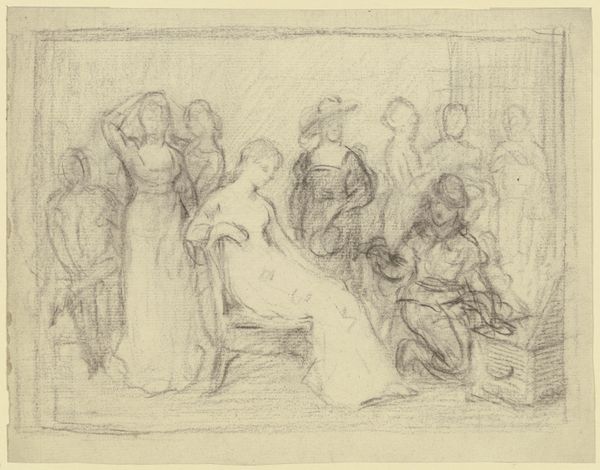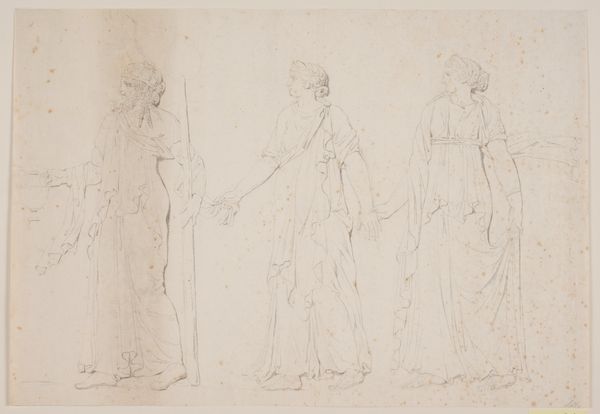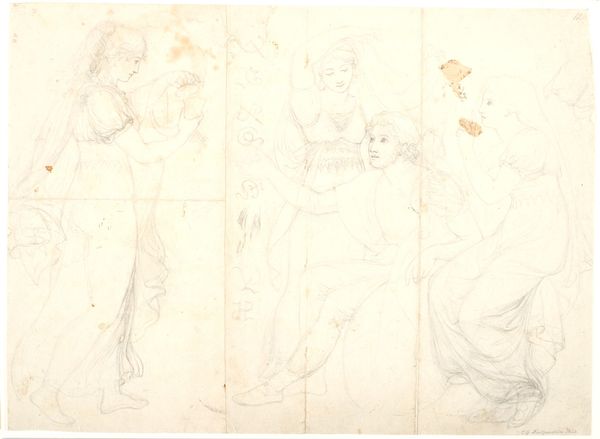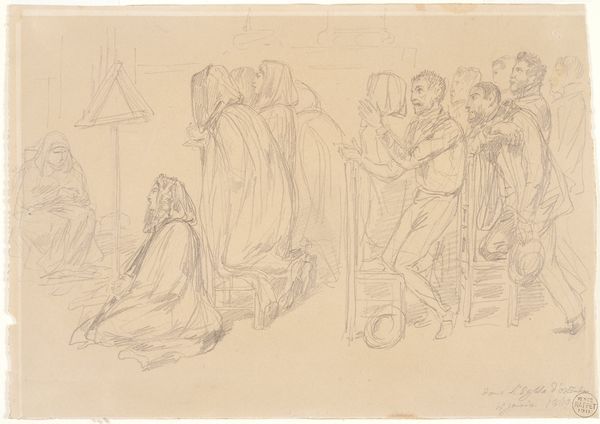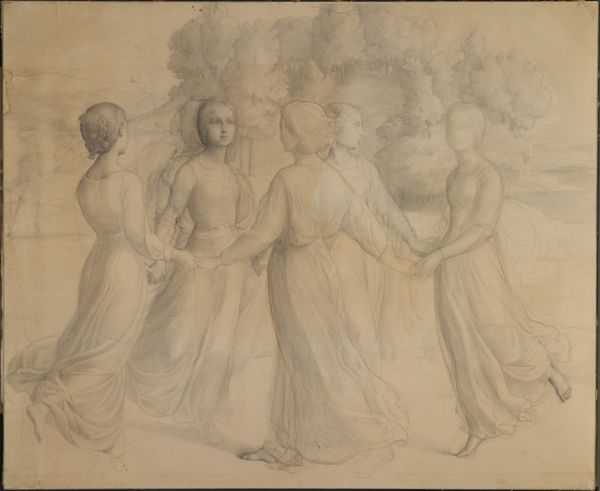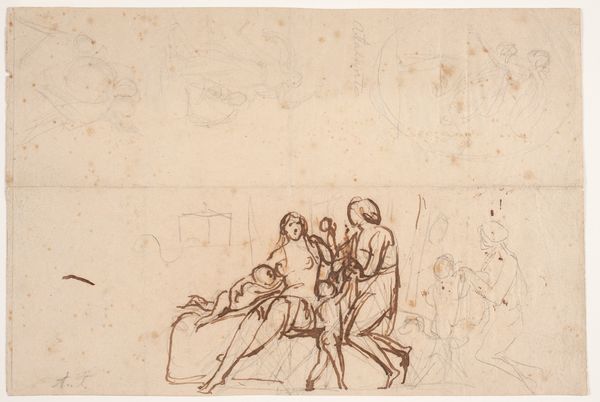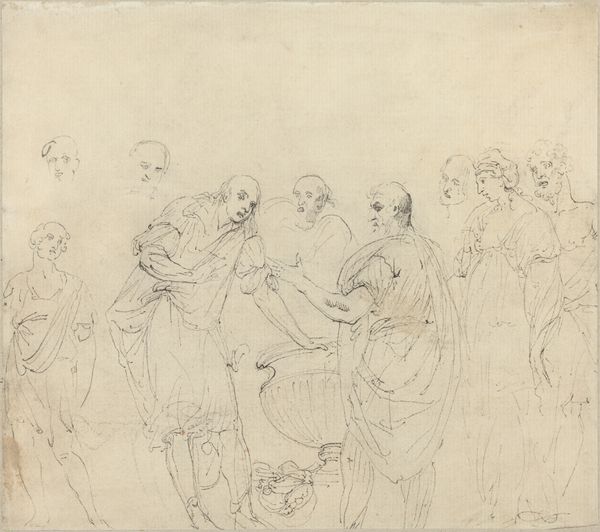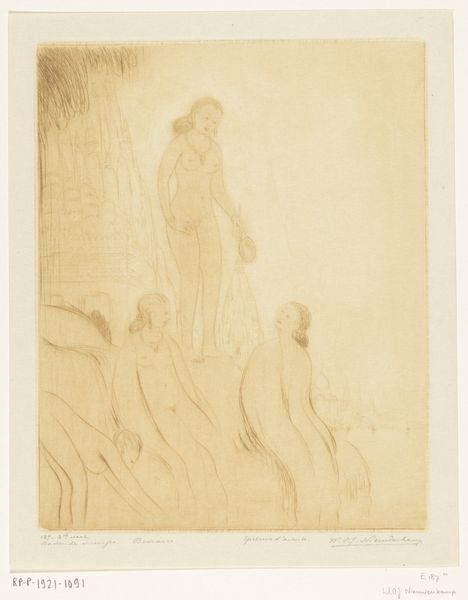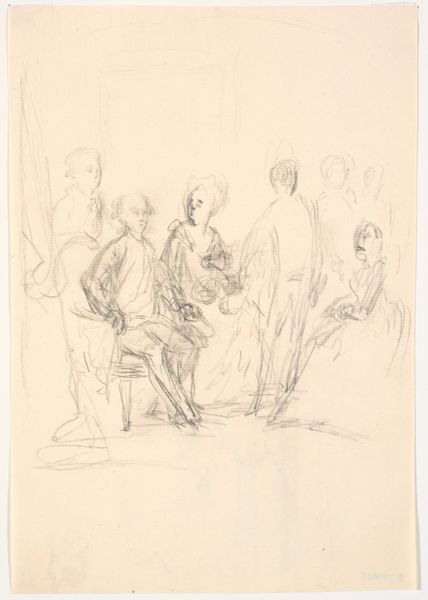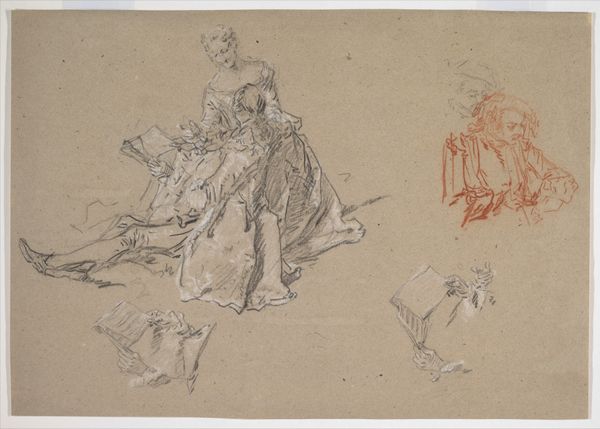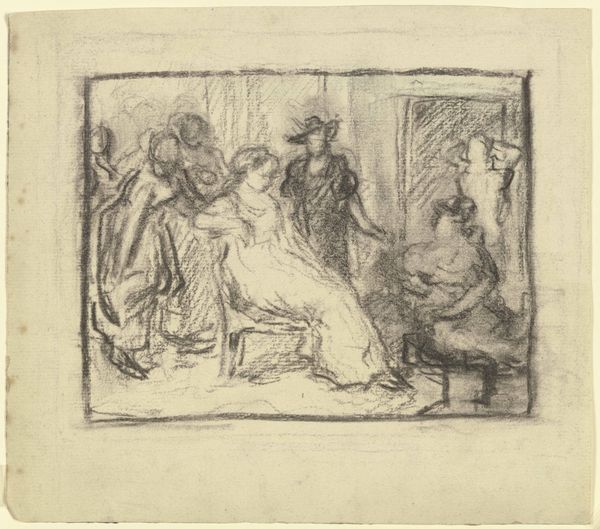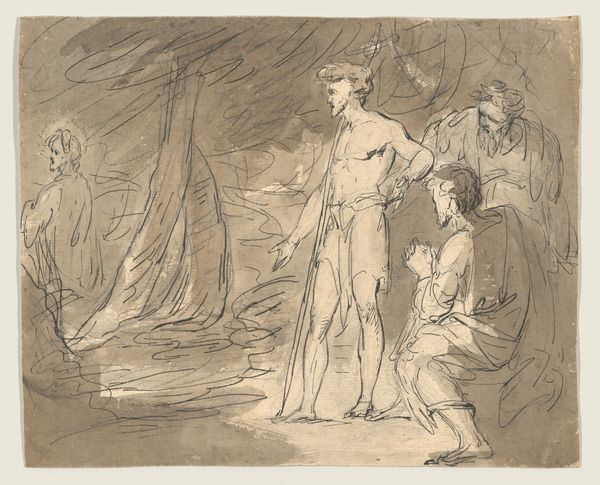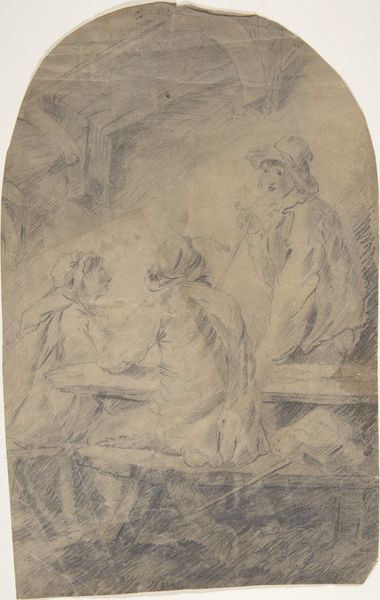
Leonora Christine modtager besøg i fængslet af Dronning Charlotte Amalie 1843 - 1917
0:00
0:00
drawing, pencil, charcoal
#
drawing
#
narrative-art
#
charcoal drawing
#
pencil
#
line
#
charcoal
#
history-painting
#
academic-art
Editor: This is "Leonora Christine Receives a Visit in Prison by Queen Charlotte Amalie," created sometime between 1843 and 1917 by Kristian Zahrtmann, using charcoal and pencil. There’s something really haunting about the way Zahrtmann captures this historical encounter. You can almost feel the coldness of the prison and the rigid power dynamic through the composition. How do you interpret this work through the lens of its historical context? Curator: It's interesting you pick up on the power dynamic. This drawing really highlights the fraught relationship between the monarchy and individuals deemed threats to the established order. Leonora Christine, daughter of King Christian IV, was imprisoned for years due to her marriage to a man accused of treason. Zahrtmann, working much later, re-imagines and perhaps critiques this history. The drawing serves as a reminder of the public spectacle surrounding imprisonment and the role of visual imagery in shaping historical narratives and public perceptions of power. Note the academic style, emphasizing the historical 'truth'. What does that choice suggest about his intention? Editor: Perhaps it’s an effort to legitimize his own commentary by aligning it with established artistic conventions, aiming for greater social impact? Is this kind of narrative common at the time? Curator: Exactly! Artists often used history painting to engage in contemporary political discourse. By depicting a scene from the past, Zahrtmann subtly critiques the exercise of power and questions the construction of historical memory. The use of charcoal and pencil allows for both delicate detail and stark contrasts, enhancing the dramatic tension. I also wonder about Zahrtmann's personal connection. Was he a supporter of certain social changes? Whose stories get told, and why? Editor: That makes me think more deeply about how historical artworks are never neutral. They reflect both the subject's time and the artist's. Thanks for making that clear! Curator: And in thinking that way, we make sure museums play their critical role in the contemporary social arena.
Comments
No comments
Be the first to comment and join the conversation on the ultimate creative platform.
